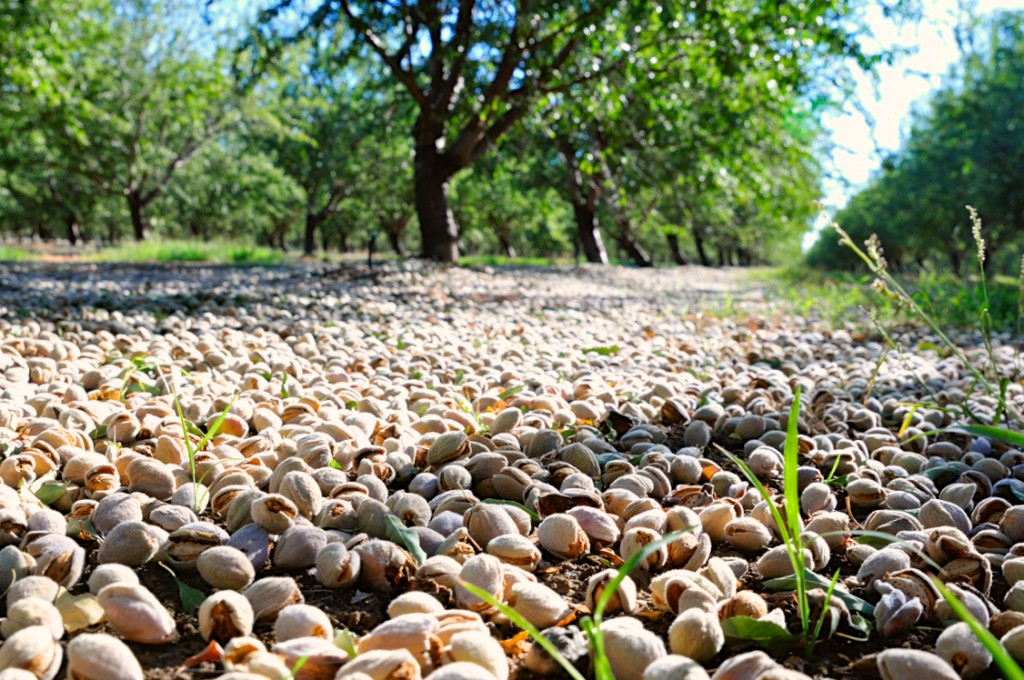
Late maturing Fritz almonds drying on the orchard floor
By Bill Morecraft
General Manager Global Ingredients
The recently released almond industry shipment numbers for the month of September were 177.1 million pounds, an increase of nearly 14% over last year’s September shipment number of 155.8 million pounds. Year-to-date shipments are 325 million pounds compared to 295.5 million pounds last year. October shipments will also be strong as buyers replenish stocks for early fall /winter demand. While the early harvest and excellent conditions have helped the industry prepare product for shipment quickly this crop year, the growth is unsustainable. Although receipts are running ahead of last year and now stand at 790.3 million pounds, total supply will not exceed 2012 Crop.
One of the biggest concerns going into this crop year is the high percentage of very small almonds. While the objective estimate of 1.85 billion pounds appears close to the mark, there is no question the amount of larger sizes commonly used in snack mixes and raw material for ingredients is significantly below what is required for the industry. This has put upward pressure on prices as we move into the heavy shipment months. Furthermore, higher prices for all tree nuts is putting pressure on buyers to recalculate their budgets. Not only almonds, but many other tree nuts as well as other agricultural food products are seeing increased demand and resulting higher prices as world markets expand. It is unlikely that we are returning to prices enjoyed a few years ago by buyers, just as it is unlikely to see cheaper gas prices from years past. The global middle class is growing rapidly and with modern communication, advertising and new technology, new consumers for almonds are appearing everyday as they search for healthier and more nutritious food.
Shipment numbers year to date for crop year 2013 show good demand for China, as this market was believed to be very low on supplies. At present China is working through high prices for walnuts, pistachio and pecans with almonds still looking good as a less expensive alternative. India is finally gaining stability after the rapid currency fluctuations. Sufficient inshell supplies are a concern for both China and India as some packers are cracking out Nonpareil and Monterey in order to fulfill kernel obligations and also increase their supply of larger kernels to sell at a premium.
North America continues its solid steady increase in consumption month after month. We also see European shipments up 7 percent compared to the same time last year. Other markets show solid demand at this early stage in the crop year.
We anticipate continued steady shipments in the coming months and a very firm market for the foreseeable future. Additionally, as we complete the harvest all eyes will be on the weather during the winter months. It is vital California receives ample rain in the valley and snow in the Sierra’s to help the current tight water situation. Water availability is a chronic problem for California and we all hope for relief this winter – after the harvest.